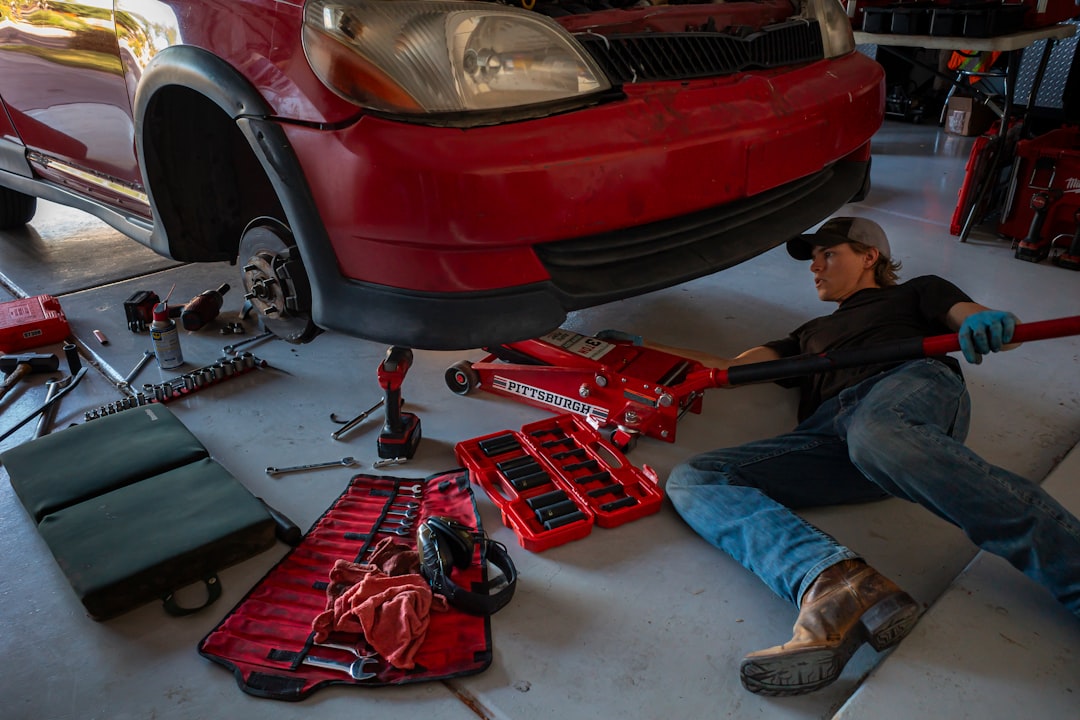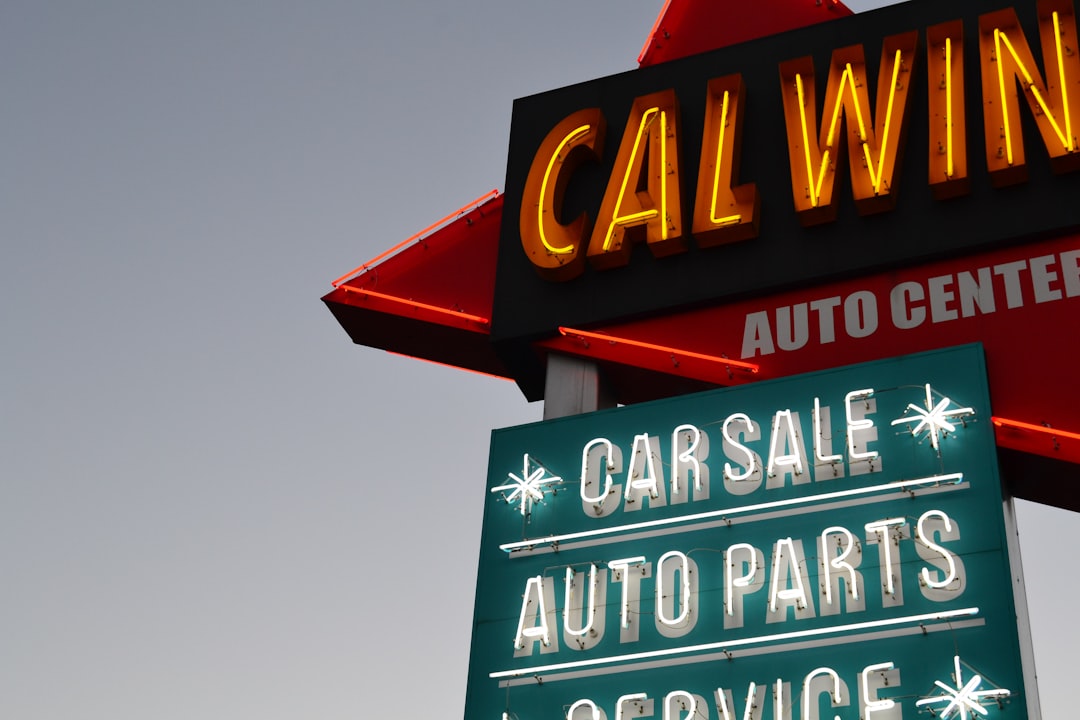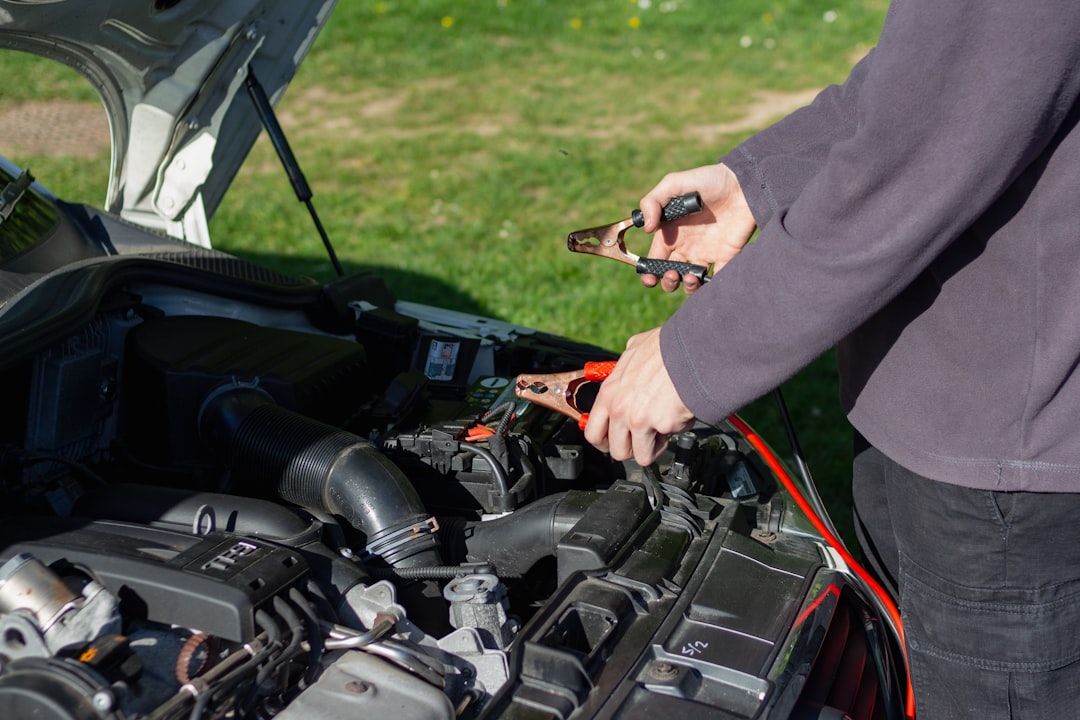

Engage prospects with a scan and streamline customer engagement with FREE QR code marketing tools by Sona – no strings attached!
Create a Free QR CodeFree consultation

No commitment

Engage prospects with a scan and streamline customer engagement with FREE QR code marketing tools by Sona – no strings attached!
Create a Free QR CodeFree consultation

No commitment
Customer expectations in the car spring replacement industry are rapidly changing, with convenience and instant access to information now driving service choices. Traditional methods like printed brochures and manual forms are giving way to interactive and trackable touchpoints that connect offline experiences to online conversions. Many shop owners face challenges in capturing high-intent prospects who often slip through the cracks without being added to CRMs or tracked in their journey.
QR codes in marketing have become a valuable tool for tackling these challenges, providing a seamless link between point-of-service materials such as service reminders, direct mail, and in-shop signage, and mobile booking, service details, and targeted offers. For car spring replacement providers, the inability to track offline engagements often means missing out on potential leads. With no app downloads required and instant data capture, QR codes make it easy to engage customers in need of car suspension repair or strut replacement cost estimates, right at the moment they are ready to take action.
By incorporating QR codes into key customer journey touchpoints, car spring replacement service providers can streamline processes, boost data accuracy, and uncover new growth opportunities. These strategic approaches help transform anonymous window-shoppers into qualified leads and reveal missed chances for follow-up or cross-sell. This guide explores practical ways to use QR codes for increasing conversions, measuring performance, and delivering a high-value, connected experience for every car spring installation inquiry.

Car spring replacement services frequently lose potential customers between offline discovery and digital engagement. A vehicle owner might see a service reminder on their dashboard, read inspection paperwork, or glance at a flyer in the waiting room, but never take the next step. Printed brochures, paper intake forms, and phone-only booking create friction. The result is predictable: lost opportunities and incomplete data that cannot support remarketing or follow-up.
QR codes bridge this gap by turning every physical touchpoint into a fast path to a mobile action. Scanning can route a customer to a booking flow, a price estimate calculator, or a short form that captures contact details and vehicle information in seconds. Compared to manual form entries or phone calls during business hours, scan-to-book experiences are faster, easier, and far more trackable. When managed through a centralized platform like Sona QR, each scan also becomes a data point that enriches your CRM and improves campaign attribution.
Define success metrics before launch so you can quantify impact. For example, target a reduction in call center time, a lift in scan-to-booking conversions, or a higher percentage of post-service reviews. Replace outdated analog processes like paper signup sheets and phone-only appointment setting with scan-first workflows that capture more leads and shorten the path to purchase. Sona QR supports this transformation by making code generation, tracking, and CRM integration simple across all your physical and digital assets. Start creating QR codes for free.

Car spring replacement providers often see a significant drop-off when customers must manually switch from an offline prompt to an online action. A driver may receive a diagnostic note recommending coil spring replacement, but the effort of typing a URL or calling later reduces the likelihood of conversion. This is especially true for price-sensitive services where customers want quick answers and scheduling flexibility. Without a trackable, low-friction bridge from printed materials to mobile actions, intent leaks out of the funnel.
QR codes remove friction at the exact moment of interest. They let customers act while the need is top of mind, capture data you can use for follow-up, and provide the agility to update offers without reprinting. They also make your offline marketing measurable. Instead of guessing which flyer or poster worked, you can see scan counts by asset, location, and time, then attribute revenue to the assets that drive real results.
When QR codes are integrated with CRM and marketing tools, service teams can connect previously anonymous offline engagements to known customers. This supports proactive follow-up: a scan from a tire rotation reminder that leads to a suspension check can alert your team to anticipate a coil spring replacement conversation during the next visit.

Car spring replacement businesses rely on a mix of offline assets such as service recommendations, work orders, invoices, direct mailers, and waiting room signage. QR codes can adapt to each use case by using the format that best matches the desired action and context. Choosing the right format increases the likelihood of conversion and ensures that data captured is useful for future marketing and operations.
Most shops will benefit from a small set of formats that cover booking, education, and follow-up. Dynamic codes are recommended for most marketing and operational scenarios because they provide analytics and can be updated without reprinting. Static codes still have a place for fixed resources that will not change, such as a PDF of a basic maintenance guide. Sona QR supports both, along with centralized management and reporting.
Dynamic codes should be the default for any placement that requires testing, personalization, retargeting, or content updates. Static codes are fine for evergreen documents that will not change for at least a year.

Growth does not always come from more advertising. Often it comes from amplifying high-intent micro-moments that already occur in your shop and across your printed materials. Drivers encounter many small prompts during their service journey. If those prompts do not offer a simple, trackable action, the moment is lost. QR codes let you harvest intent whenever and wherever it appears.
Map your physical environment and existing collateral to identify places where a scan could meaningfully advance the customer’s journey. Prioritize placements that align with high purchase intent or immediate questions about price, timing, and parts availability. Use distinct QR codes for each placement so you can see which ones pull prospects deeper into the funnel.
With unique parameters and dynamic destinations, you can measure which placements drive the most scans, approvals, and bookings, and allocate spend accordingly. Over time, the data shows you where to add more codes and which messages resonate best.

QR codes perform best when aligned to specific customer moments and outcomes. In car spring replacement, the most valuable use cases tend to reduce friction in booking, improve education and trust, and capture feedback that fuels reputation and referrals.
These three use cases align with the most common customer interactions in spring and strut replacement services. You can also extend them with advanced workflows, such as scan-triggered financing applications or inventory alerts for specific parts.
Every scan is a behavioral signal that reveals intent, context, and urgency. By deploying multiple QR codes across your customer journey, you build segmented audiences that can be nurtured with the right message at the right time, including intent-driven retargeting. The key is to assign each code to a distinct journey stage and to tag scans with meaningful attributes.
In car spring replacement, segments often correspond to urgency and vehicle type. For example, a driver scanning a code on an inspection report has higher intent than someone scanning a general poster. A fleet manager scanning a vCard at a trade show requires different follow-up than a commuter scanning a waiting room poster. Sona QR helps you tag and sync these nuances with your CRM and ad platforms automatically.
Industry-specific segmentation examples include owners of vehicles with known spring issues, fleet and rideshare managers with recurring service needs, or customers who scanned financing options but did not submit an application. Treat each segment differently to improve conversion rates and customer experience.
QR codes connect your offline presence to your digital engine so you can meet customers where they are and guide them to a measurable action. When codes are embedded across channels, your marketing stack gains visibility into how print, in-shop experiences, and media placements influence outcomes like bookings and approvals.
Use QR codes to make every channel accountable. Unique codes per asset or placement reveal performance differences across neighborhoods, partners, and formats. With Sona QR, you can manage codes centrally, update destinations without reprinting, and sync scan data into your CRM and analytics tools.
QR codes serve as the offline onramp to your digital marketing. They also unlock a new layer of measurement for media that was previously opaque. With Sona QR, you can tie code performance to revenue in your CRM and prioritize the channels that drive bookings and approvals.
Clarify the single business outcome you want to achieve first. For many spring replacement shops, the highest impact comes from reducing drop-off between an inspection recommendation and a scheduled repair. A scan-to-book use case on technician recommendation slips often produces a rapid lift in approvals and fewer missed opportunities.
Consider secondary outcomes that support growth, such as increasing review volume, capturing referrals, or reducing front desk workload. Starting with one focused use case keeps creative and operational complexity manageable while giving you a fast win to showcase internally.
Select dynamic QR codes for most campaigns. They enable analytics, destination changes, and A/B testing. If you later want to route scanners from the same print piece to a seasonal promotion or a new landing page, you can do that instantly with dynamic QR codes in Sona QR.
Static QR codes are acceptable for evergreen resources that will not change, such as a PDF of your warranty policy. Balance the need for flexibility against the nature of the content. In almost every marketing scenario, dynamic codes deliver more ROI due to trackability and agility.
Design with intent so your QR earns the scan. Add a clear visual frame, your logo, and a benefit-driven call to action. For example, “Scan to check coil spring availability,” or “Scan to get your suspension estimate in 60 seconds.” Use high contrast between the code and background to ensure scannability across glossy and matte finishes.
Test thoroughly across devices, distances, and lighting conditions. Print at multiple sizes and verify that the shortest plausible viewing distance still yields a fast scan. Ensure the destination page loads quickly on mobile, fits the screen, and minimizes typing. If you capture data, keep forms short and use autofill where possible.
Roll out your codes in the places with the most immediate intent. Technician recommendation slips and service bay signage capture customers while they are considering add-on or deferred work. Invoices and warranty cards capture post-service engagement that can lead to reviews, referrals, and re-inspections.
Use unique codes for each placement so you can isolate performance. Direct mailers can prompt seasonal suspension checks, while waiting room collateral can focus on same-day availability. Label each code clearly in Sona QR with the placement name and campaign dates so reporting remains clean as you scale.
Monitor scans, conversion rates, and drop-off points weekly. If a code has high scans but low conversion, test different CTAs, change the destination, or adjust the placement. If scans are low, revisit your design, increase size, or move to a higher visibility location. Use UTM parameters on every destination so your analytics reflect the full journey from scan to booking and align with multi-touch models.
Over time, build a library of proven placements and messages. Share wins with your team and replicate successful patterns across locations. With Sona QR, you can view performance by asset, time, device, and geography, then push insights into your CRM and ad platforms to power retargeting and nurture flows.
For many car spring replacement shops, the toughest part of marketing is attribution. You might know that direct mail or in-shop signage contributes to bookings, but without granular data you cannot quantify which assets and messages are working. QR codes solve this by creating a measurable, trackable link between offline prompts and digital actions.
Capturing the scan is only the first step. To prove impact, you must connect scans to downstream events such as form fills, phone calls, approvals, and closed revenue. Modern platforms like Sona QR and Sona provide the tools to unify these signals. Scans enrich contact records in your CRM, attribute influence across channels, and reveal which campaigns convert intent into appointments and sales.
The result is clear visibility from scan to sale. Instead of relying on anecdotal evidence, you can allocate budget and time to the placements and messages that consistently drive profitable bookings.
Once your first codes are producing results, expand methodically. The fastest way to scale impact is to improve measurement, simplify the next action, and train staff to promote scanning at key moments. Focus on a few high-value practices that fit your physical environment and customer behavior.
Two creative deployment ideas stand out for this vertical. First, add QR codes to courtesy car hang-tags that link to a post-service checklist and a referral incentive. Second, place a code on alignment reports that opens a short video explaining why new springs may require a follow-up alignment, then prompt immediate scheduling.
As you standardize these practices, your QR program becomes a reliable driver of bookings, reviews, and cross-sells, while your analytics become a strategic asset for decision-making.
QR codes are more than a convenience feature. They are a practical strategy for turning every physical touchpoint into a measurable gateway to action. In car spring replacement services, this means making it simple for customers to book repairs, understand price and process, and stay engaged after the work is complete. By tightening the link between offline prompts and digital outcomes, you reduce friction, capture more data, and prevent intent from leaking out of the funnel.
Here is what a connected approach delivers. Your shop can drive instant engagement from flyers, invoices, inspection reports, and signage. The customer journey is unified, moving drivers from awareness to approval with fewer hurdles. Every scan becomes an actionable signal that fuels remarketing, informs staffing and inventory decisions, and ties campaign spend to revenue. With Sona QR, you can generate trackable codes in minutes, update destinations without reprinting, and sync scan activity with your CRM and ad platforms.
If you are ready to modernize your workflows, start with one high-impact use case such as scan-to-book on technician recommendations. Measure results, iterate quickly, and expand to feedback capture and aftercare content. Over time, your QR program will evolve into a core growth engine that improves attribution, raises conversion rates, and strengthens customer relationships in a competitive market.
QR codes have revolutionized the car spring replacement services industry by turning traditional marketing into dynamic, measurable customer engagement channels. Whether it’s acquiring new clients, enhancing service transparency, or simplifying appointment bookings, QR codes replace cumbersome processes with instant, mobile-friendly actions that capture real-time data—transforming every flyer, poster, or vehicle tag into a powerful conversion tool. Imagine instantly knowing which promotional materials drive the most bookings and being able to optimize your campaigns on the fly.
With Sona QR, you gain access to dynamic, trackable QR codes that can be updated anytime without reprinting, linking every scan directly to customer interactions and revenue growth. This means no wasted marketing spend and no missed opportunities—just smarter, more effective campaigns tailored to your car spring replacement service business. Start for free with Sona QR today and turn every scan into a loyal customer, a booked appointment, or a completed sale.
Signs of worn-out car springs include unusual noises, ride height changes, and suspension issues, which can be identified during vehicle inspections or diagnostic notes.
Typical costs and price estimates for car spring replacement can be accessed quickly via mobile-friendly tools linked through QR codes on service reminders or shop materials.
Reliable services can be found by scanning QR codes on direct mailers, service bay posters, or technician recommendation slips that provide booking and contact information for local shops.
Common signs include strange noises during driving, decreased ride comfort, uneven vehicle height, and handling problems, often detailed in inspection reports with QR code links for more information.
While exact time varies, educational content accessible via QR codes explains typical service timelines and helps set customer expectations.
Replacing car springs restores ride comfort, vehicle handling, and safety, and can prevent further suspension damage, improving overall driving experience.
Preventive maintenance includes regular inspections, timely repairs, and following aftercare guidance accessible through QR codes on warranty cards and inspection reports.
Car springs support vehicle weight and absorb large bumps, while shock absorbers control spring movement and dampen oscillations for a smooth ride.
It is recommended to replace springs in pairs to maintain balanced suspension and consistent vehicle handling.
Use Sona QR's trackable codes to improve customer acquisition and engagement today.
Create Your FREE Trackable QR Code in SecondsJoin results-focused teams combining Sona Platform automation with advanced Google Ads strategies to scale lead generation

Connect your existing CRM

Free Account Enrichment

No setup fees
No commitment required

Free consultation

Get a custom Google Ads roadmap for your business






Launch campaigns that generate qualified leads in 30 days or less.
